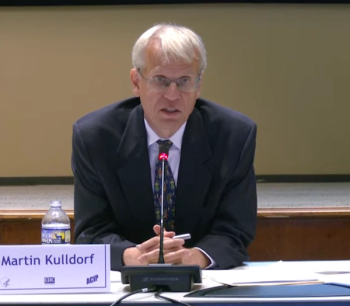
Trump eyes steep pharma tariffs, threatening higher drug costs and shortages
Key Takeaways
- Proposed tariffs on EU pharmaceuticals could reach 200%, aiming to boost U.S. manufacturing but risking drug shortages and price hikes.
- Over half of U.S. brand-name drugs and 80% of generics depend on foreign production, making them vulnerable to tariff impacts.
New tariffs of up to 200% could hit medications from the European Union and beyond, raising alarms over affordability, access and supply for physicians and patients.
President Donald Trump has signaled plans to impose new
“Probably at the end of the month, and we’re going to start off with a low tariff and give the pharmaceutical companies a year or so to build, and then we’re going to make it a very high tariff,” Trump told reporters.
Essential drugs on the line
More than half of the brand-name drugs prescribed in the U.S. are imported, and over 80% of generic prescriptions rely on ingredients or manufacturing capacity abroad, primarily in Europe, India and China. That leaves many of the most commonly prescribed therapies — from antibiotics to blood pressure medications — vulnerable to price hikes or disappearing altogether.
Physicians already grappling with the intermittent shortages of widely used generics may soon see more frequent disruptions. According to a
The burden at the counter
Even so, the
Private practices could also feel the impact as patients defer care, stretch medications or turn to physicians to navigate insurance coverage denials.
And while the administration has argued that the tariffs would incentivize domestic drug manufacturing, reducing dependency on foreign sources, rebuilding a full pharmaceutical supply chain in the U.S. would take years.
Trump has paired the tariff push with a revived proposal for a “most favored nation” drug pricing model, which would peg U.S. prices to those paid by the lowest-paying wealthy country. But similar efforts during his first term failed to gain traction, and the new executive order lacks clear enforcement mechanisms.
What’s next?
The President has not yet finalized the EU-specific tariff, but he has signaled that action could come as early as August 1, following a pause in his broader “reciprocal tariff” program. He has also floated import taxes on pharmaceuticals from other regions, including India and China.
For physicians, the consequences could be immediate and close to home. Rising costs, strained formularies and new gaps in drug availability may land squarely in the exam room, where physicians are already tasked with finding affordable and effective treatments. Physicians may find themselves on the front lines of yet another
Newsletter
Stay informed and empowered with Medical Economics enewsletter, delivering expert insights, financial strategies, practice management tips and technology trends — tailored for today’s physicians.















